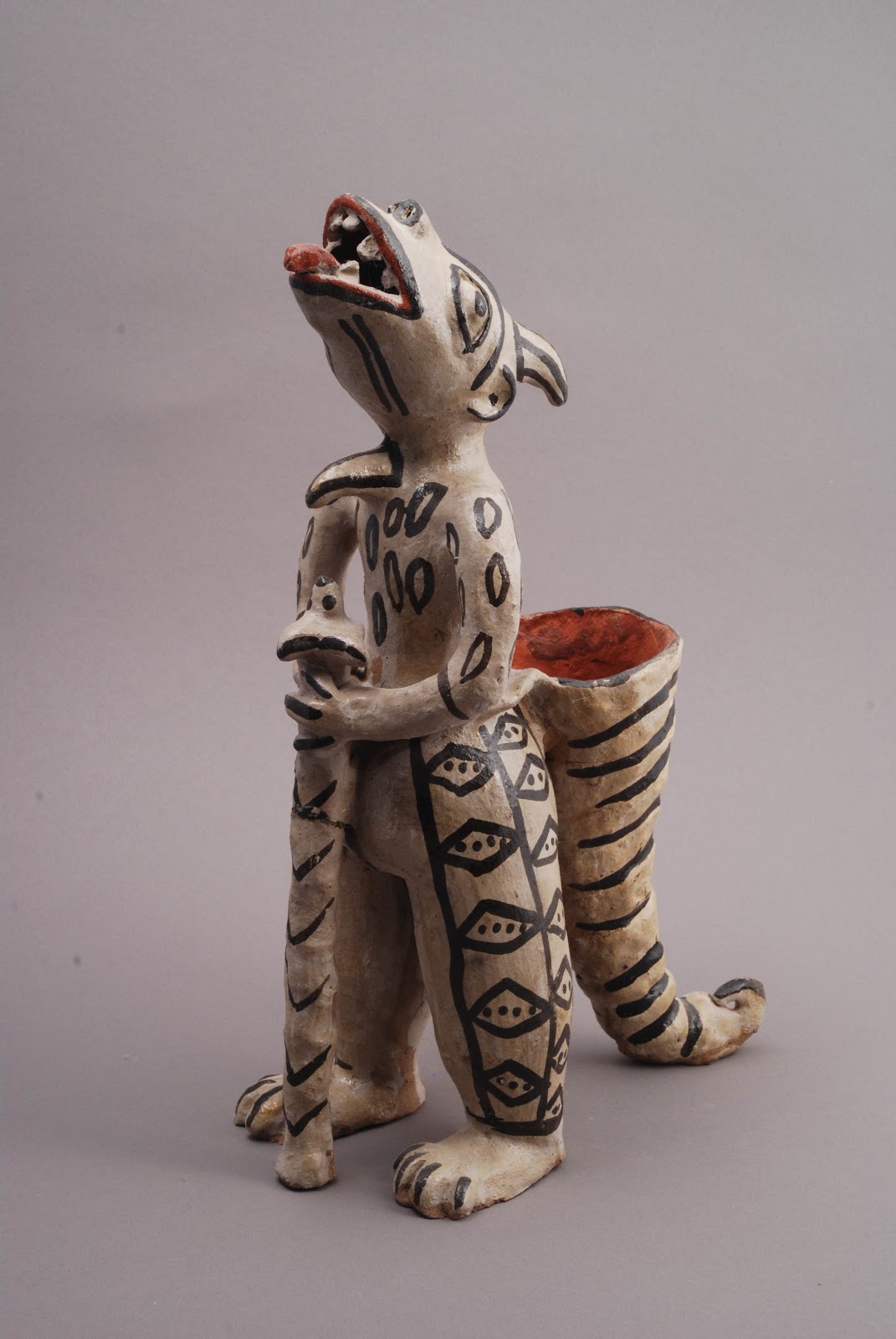Over the past 20+ years now I have been doing research in the Amazon region of Ecuador (much of that time with colleagues Richard Burkett and Nan Coffin). And during this time I have taken the perspective of one who observes, documents and comments on the clay work produced in the rainforest. I do not see myself as someone trying to stop the inevitable cultural change that occurs naturally. By this, I mean not someone who, observing that traditions are changing, or even dying, within indigenous communities (resulting from an array of reasons that cause this to happen), works to stop that change and therefore keep a craft tradition alive. For me, the extent of trying to slow down any movement toward extinction comes only in the form of buying and documenting their work, hopefully adding support to their current efforts in clay. In short, I prefer to be the one peeking in through the keyhole in the door of another culture to see what is happening.
But the real question I have for any of us engaged in this type of work is this: How do WE affect change in what they produce, through the presence in, and the study of, cultures other than our own? An example for me is when I was visiting an Amazonian Kichwa potter one day who I have known for years, only to discover that a ceramic figure she had made (a Juri-Juri, a protectorate of the indigenous) that was sitting on the shelf, was made in my image. While this was meant both as a compliment and a bit of humor, the image caused me to be reflective on how my own interaction with this potter over the years had inspired her to alter the traditional image she had in her head of the Juri-Juri. As I thought about it more, and after several years of returning to the rainforest to meet new potters as well as ones I had met in previous trips, I found myself becoming increasingly aware of my own footsteps into another culture and how my interactions might affect the direction of their work.
Hmmm, a lot to consider, for me anyway, and perhaps for others too, especially anyone stepping outside their own cultural landscape to study the work of indigenous people. The questions are many, and the answers few. With this in mind I put together a panel presentation for NCECA in Houston later this week, one that addresses this issue in hopes of gaining a broader perspective on the question. Invited panelists Doug Casebeer (presenting his work in Nepal, Chile and Jamaica), Winnie Owens-Hart (Ghana and Nigeria), and Richard Burkett (Ecuador and the Amazon), will comprise a roundtable of discussion on these very issues, allowing me to present each of them with questions on the topic. While I don't really expect to find the answers just yet, I am happy to be asking the questions. Something I feel important for our field of study, especially in a time when access to remote locations has become easier than ever before.
Anyone at NCECA interested, I hope to see them there! In the meantime, here are some images from the Amazon that might help present a sense of place and people that represent a particular traditional landscape, and provide reference for the very questions with which I am struggling.
 |
| Dog figure |
 |
| Juri-Juri |
 |
| Shiwiar Chicha Pots |
 |
| Huaorani potter |